An Insider’s Guide to Palermo Street Markets, Sicily
For those who have never visited the island of Sicily, it may come as a surprise to learn that this region of Italy has just as much in common with Arab culture as it does Italian.
Of course, you will find pasta, pizza, and plenty of Aperol, but you’ll also find labyrinthine Kasbahs, dishes infused with North African spices, and a language that shares similarities with Arabic.
With over 1000 years of Arab influence, and a close proximity to North Africa (Sicily is actually closer to Tunisia than Rome), it is hardly surprising that Sicily has so much in common with the Arab world, and the historic street markets in Palermo, the rugged capital of Sicily, date back to the 9th century Saracen rule of the island, explaining their striking similarity to the souks of Marrakech.
It can be said that Palermo’s street markets are the best-preserved of Sicily’s Arab traditions, and if you find yourself in Palermo for a few days, you should certainly take some time to visit Palermo’s historic markets as they’re one of the best things to see in Sicily.
An Insider’s Guide to Palermo Street Markets
Each Palermo street market has its own unique feel, but each one of them is a rich cultural experience waiting to be had.
The Palermo street markets are not only a unique cultural experience, but they are also a gateway to the past, a place where you can buy the freshest and cheapest groceries in the city, and somewhere where you can devour fantastic street food.
Seriously, Forbes themselves said that Palermo is home to the best street food in Europe (just one of the many reasons to visit Palermo!), and you can bet that the markets are the best place to get your hands on some!
Here is some more information about the 4 ancient markets of Palermo: Ballaro, La Vucciria, Il Capo, and Borgo Vecchio.
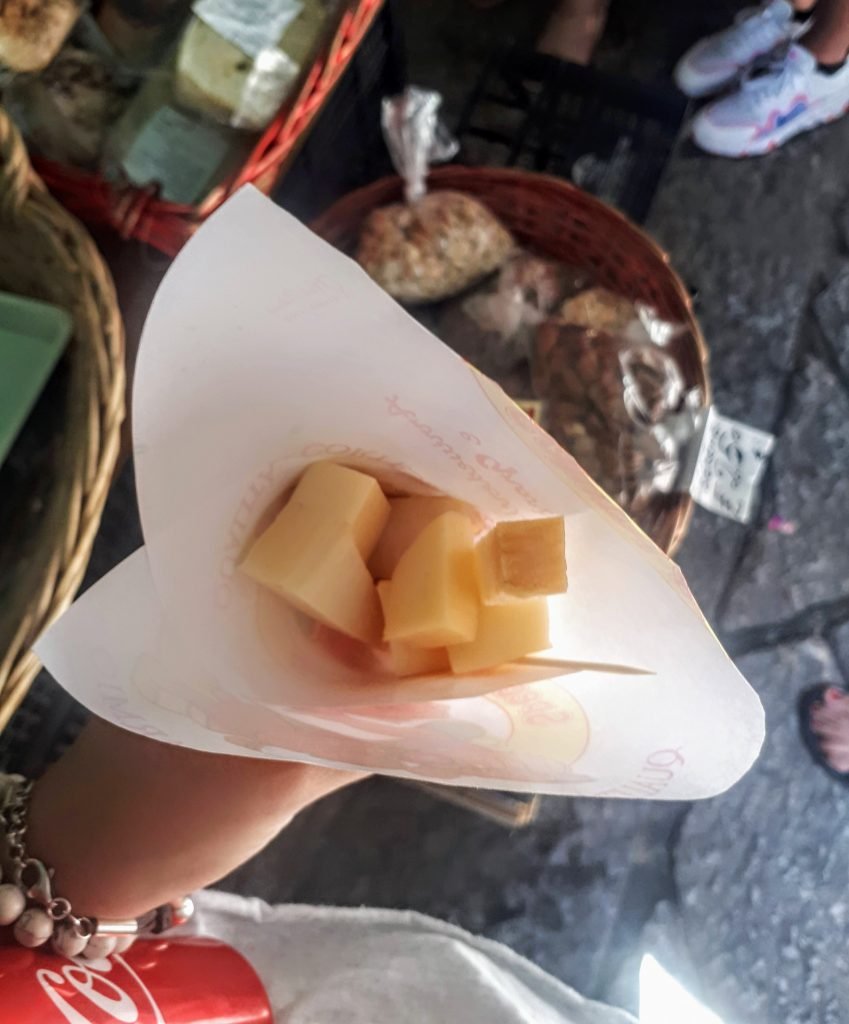
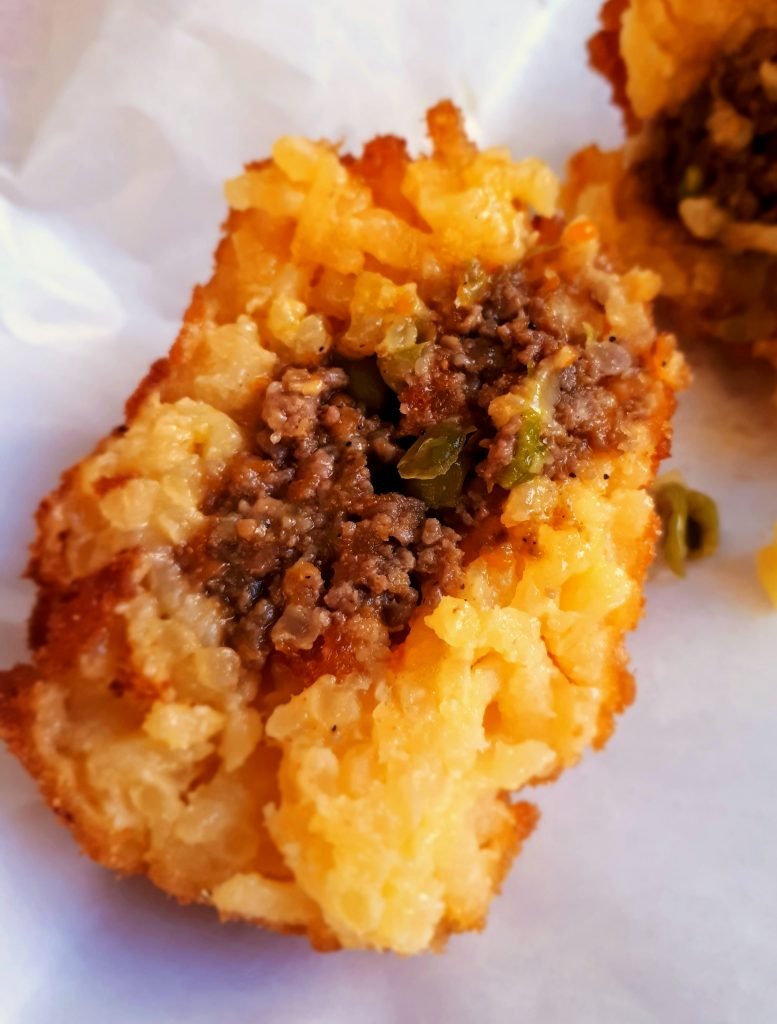
Ballaro Market Palermo
Ballaro market is the largest of Palermo street markets, and is located in the south of the city, close to the train station.
It is the oldest, and most revered by locals, and if you want to throw yourself in at the deep end, you should begin your exploration of Sicilian street markets here in Ballaro.
As soon as you enter Ballaro market, you will notice that you are in one of the poorest areas of the city centre.
Dilapidated buildings with broken windows and crumbling walls are aplenty here, but that doesn’t take away from the vibrancy of Ballaro, with the merchants singing in the Arab tradition that has survived for the last 10 centuries, Sicilian nonnas elbowing their way past you to get to the juiciest tomatoes, kids whizzing by on mopeds, and moody teenagers smoking weed on the sidelines.
The true multicultural nature of Palermo is most visible here, with cumin, coriander, and curry powder sitting alongside fresh honey, prosciutto, and olives marinated in every herb imaginable.
Ballaro market reminds me the most of the souks in Marrakech, with its narrow cobbled streets lined on either side by shops and stalls crammed full of food, trinkets, and increasingly, tacky souvenirs.
Wooden crates balance precariously alongside cafes that would never pass a health and safety inspection, but that continue to thrive, serving arancine and other Sicilian street foods to hungry patrons.
While Ballaro market is where you’ll get the best value food (and the most authentic glimpse into Sicilian life), it is important to note that you will find pickpockets here, and so it’s best to leave your valuables in the hotel and not walk around with a big old camera hanging around your neck.
As a female (and a non-Sicilian female at that), I would also avoid the Ballaro area at night, and try to avoid choosing accommodation here. This is where a lot of the city’s poorest residents live, and there is a fair amount of drug dealing and petty crime that take place here after dark.
La Vucciria
La Vucciria, which translates to ‘confusion’ or ‘chaos’ is another of Palermo’s historic street markets, although those who visit expecting a bustling food market often leave feeling perplexed as to what all the fuss is about.
You see, until the sun goes down, there is really not that much happening in La Vucciria.
The ‘market’ consists of several stalls along narrow Via Maccheronai selling fruit and vegetables, bric-a-brac, antique newspapers, old photographs, coins, and other seemingly random items, as well as cheap plastic toys and souvenirs.
There will usually be a few wizened old men gathered around a wooden table gambling and smoking cigarettes, a local drunk propping up the bar, and a friendly street dog or two.
However, what you also get in La Vucciria are legendary bars serving the cheapest booze in the city, sizzling Palermo street food that you will not find anywhere else, chic aperitivo joints (check out my post about aperitivo in Palermo for more!) and craft beer bars, oysters on ice, and people from all walks of life looking to have a good time.
Piazza Caracciolo, the main square that makes up La Vucciria, transforms into one of Palermo’s best nightlife spots at night, when street food vendors begin grilling meat and deep frying other Sicilian delights, makeshift bars pop up selling 1 EUR shots and playing reggaeton music, the African restaurant Ciwara explodes with traditional Senegalese and Gambian dancing, and the drinks begin to flow.
If you’re interested, I wrote a full guide to La Vucciria here, with all my recommendations on the best bars and eateries here, as well as some tips on what to do and what not to do when you visit Vucciria.
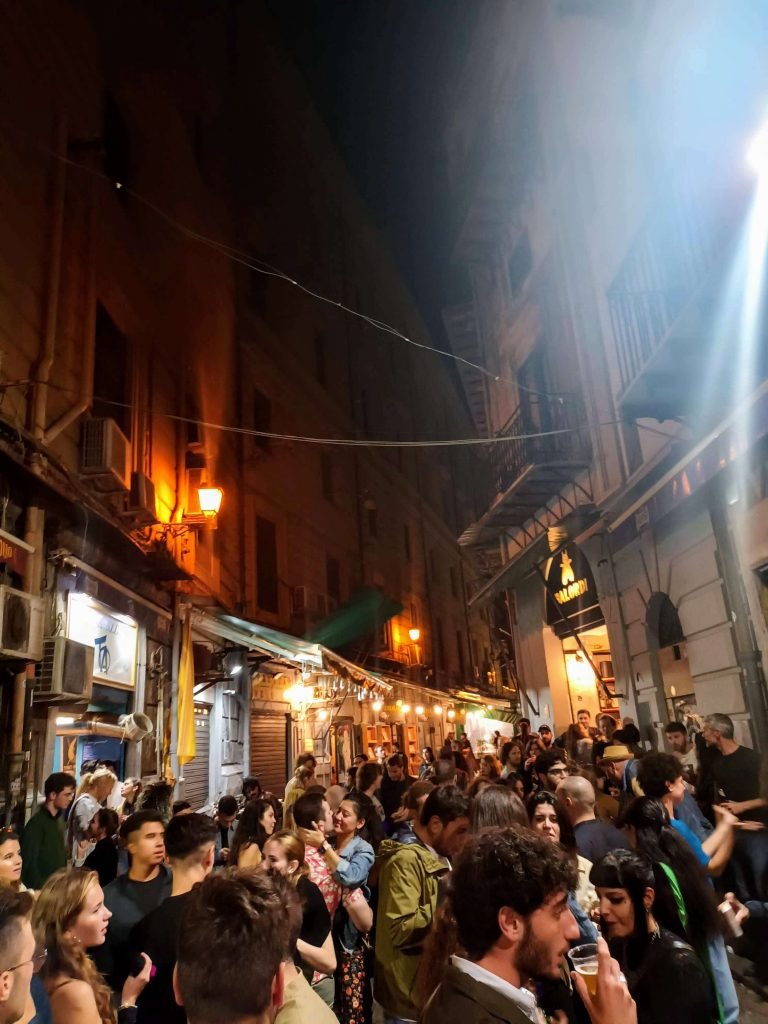
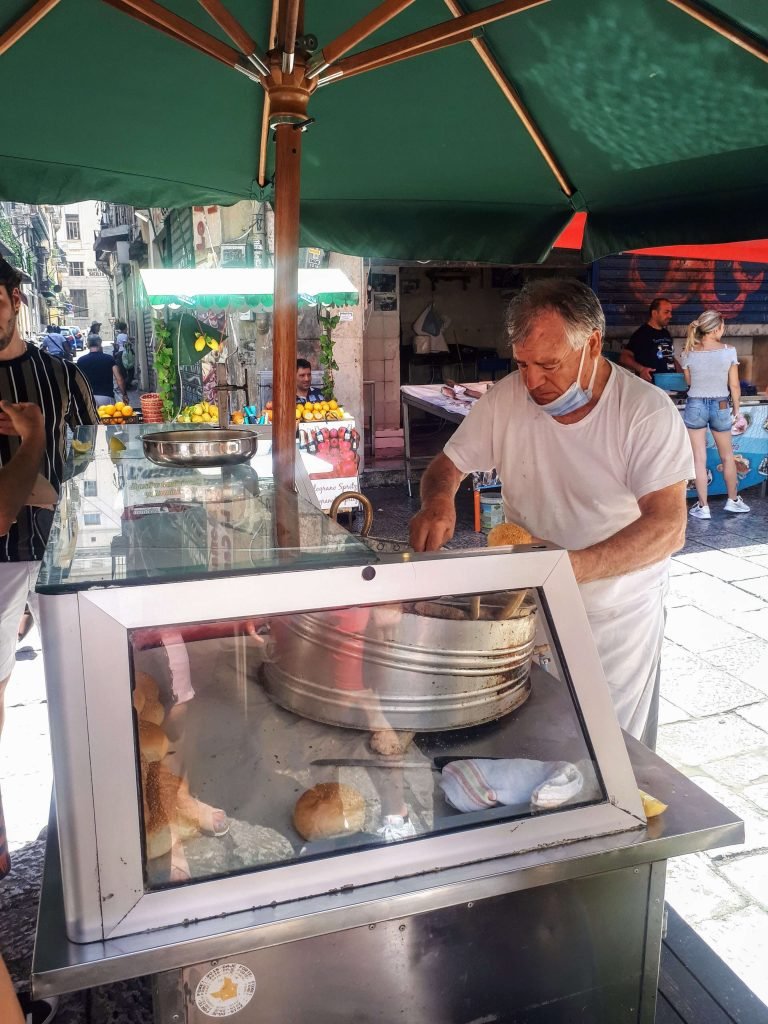
Il Capo Market Palermo
Il Capo market is another lively Palermo street market that used to be where pirates and slave merchants did business.
Mercato il Capo was founded by Arabs and has been open every single day for over 1000 years, with the exception of the Patron Saints day of St. Rosalia.
Enter this market through the Neoclassical Porta Carini, one of the oldest city gates of Palermo that lies just 500 metres from the magnificent Teatro Massimo.
This gateway dates all the way back to 1310, and used to be the road to the village of Carini, which is around 10km from the city of Palermo.
It is a place where your every sense will be aggressively stimulated.
Smells of fresh fish, greasy fried goodness and exotic vegetables are punctuated by the sounds of the vendors yelling and singing, 3-foot long zucchinis sit alongside 50 different types of tomato, and of course, decapitated swordfish, which is a staple of Palermo markets.
Make sure to try the famous bread made using a secret recipe and cooked in a wood oven in Monreale, a hilltop village above Palermo, before indulging in an arancina stuffed with ragu, deep fried potato croquettes, and some chickpea fritters.
If you prefer, head to the fishmonger’s stall and pick up a portion of swordfish caponata, octopus salad, or pasta con le sarde, prepared fresh each morning by the fishmonger’s wives in the room above the main shop.
Just like with Ballaro, Capo market is somewhere that you should be vigilant and keep an eye on your valuables. You don’t have to be scared, but do be cautious.
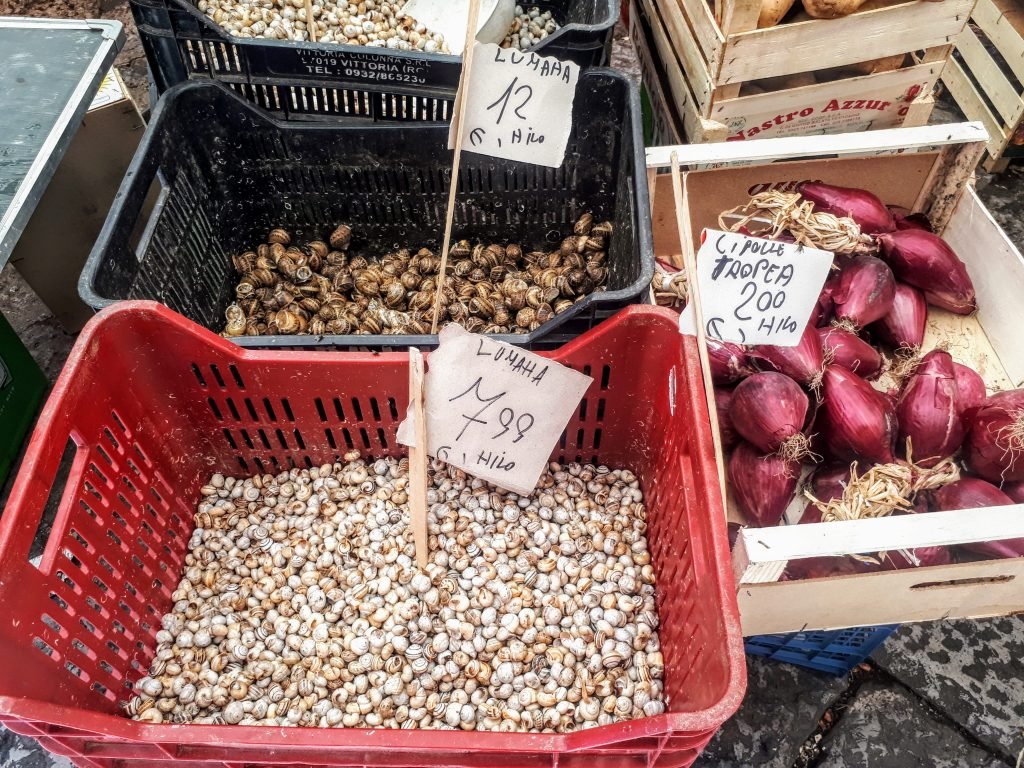
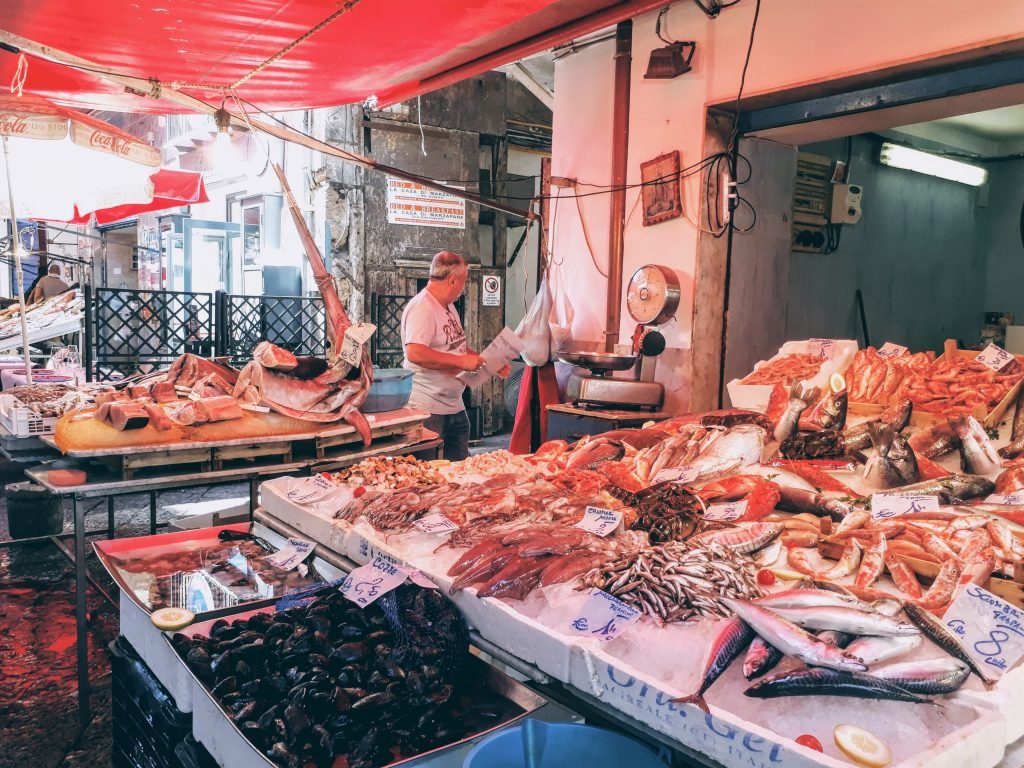
Borgo Vecchio
Borgo Vecchio is the smallest of all Palermo’s street markets, and is around a 15 min walk from the centre, making it the furthest out.
It is also the least touristy of all the markets, but honestly, it’s very small and you won’t find anything here that you can’t get in abundance at any of the other 3 Palermo markets.
Many online guides say that Borgo Vecchio is a good nightlife spot, but I’d also have to disagree with that.
While I personally have never spent an evening here, Palermitani friends have told me that Borgo Vecchio is more like an ‘open air drug market’ where you can feel the mafia presence more than anywhere else in the city.
Safety in the Palermo street markets
Now look.
I don’t want to scaremonger or make you terrified to visit Palermo and its markets.
The Palermo street markets are among the best things to see in Palermo, and no trip to Sicily’s capital is complete without a stroll through Capo or an evening beer in La Vucciria.
With that being said, it would be irresponsible of me not to warn you of the risks.
Palermo’s markets are located in poor areas, and like any crowded space, they are vulnerable to pickpockets and petty criminals.
I would advise you to visit Palermo’s markets, but don’t glam up.
Leave your jewellery at home, don’t wear a camera around your neck, and keep your phone well-protected (don’t be one of those people who puts their phone in their back pocket and acts surprised when they realise it’s no longer there when they get home!).
I would also advise leaving your bank cards at the hotel and just carrying as much cash as you think you’ll need.
Again, my aim here is not to make you paranoid.
If you stay vigilant and don’t walk around in cloud cuckoo land, you’ll probably be fine.
I’ve been to the Palermo street markets more times than I can count, and I have never been a victim of crime (although I have witnessed people being pickpocketed in La Vucciria).
Another word of advice? Don’t wear open-toed shoes. You don’t want to step in fish guts.
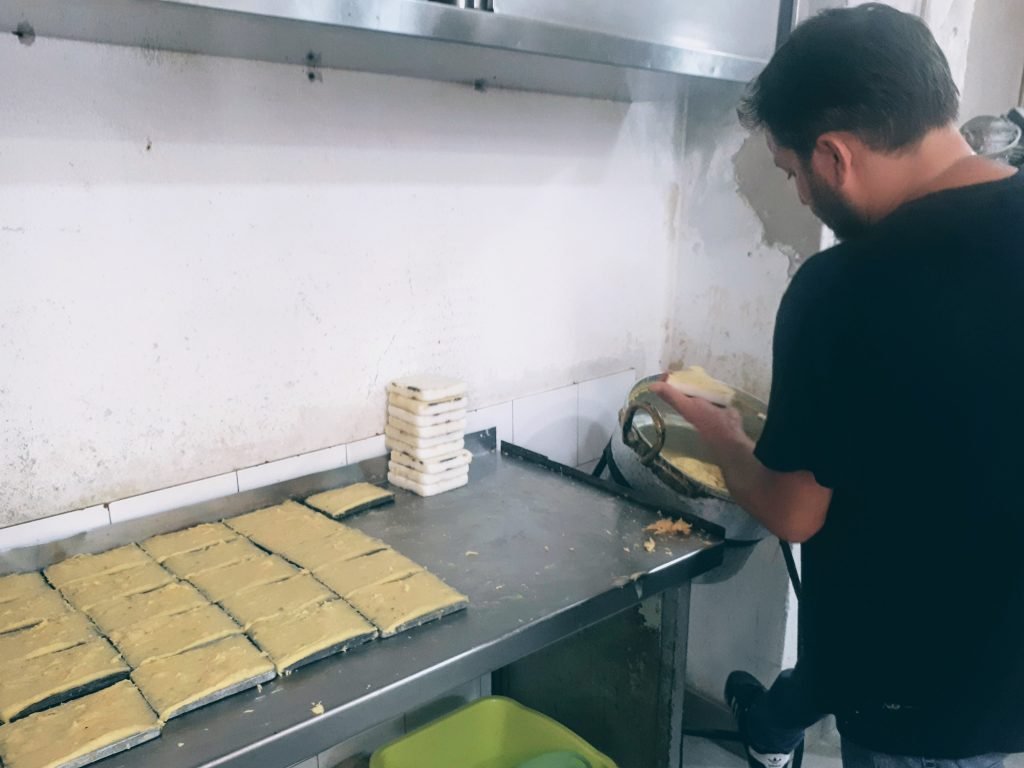
Exploring Palermo markets with a guide
If all this talk about kids on mopeds, fish guts and petty thieves has made you a bit hesitant to visit Palermo’s street markets, you may prefer to visit them as part of a guided tour.
There are many walking tours and street food tours that will take you through one, or several, of Palermo’s markets, and in my opinion, guided tours are the best way to learn about a place.
Although I’d visited the markets many times when I booked a street food tour with Streaty, I learnt so much on my tour with them that I highly recommend signing up to anyone visiting Palermo.
Not only did we get to try all of the iconic Palermo street foods, but we got to meet the vendors and learn their histories, see panelle being made, drink blood wine in one of the oldest taverns in Vucciria, and learn more about the Arab history of Sicily and its markets.
This is the street food tour that I attended.
Palermo Street Markets | Final Thoughts
I hope that this post has given you a bit more of an insight into Palermo’s historic street markets and what you can expect from each one.
In my opinion, they are the best place to experience true Sicilian culture, and glean an understanding into the lives of working class Sicilians.
Palermo’s markets are not only a place for shopping.
They are also a place for socialising, gossiping, and bartering, and visiting them is certainly an experience.
The Palermo street markets are open every day except Sundays. On Wednesdays, they close at 2pm.
That’s about it for today, but as always, if you have any questions, don’t hesitate to ask me in the comments section below!
Until next time,
XOXO
If you liked this article and would like to support my work, please click the button above to donate a couple of bucks and buy me a coffee. The ad revenue that I receive on this website is minimal, so support from my readers enables me to keep creating content that you (hopefully!) love to read.
Disclaimer: Travelling Jezebel contains affiliate links. If you make a purchase on a recommended site, I may make a small commission at no extra cost to you.
